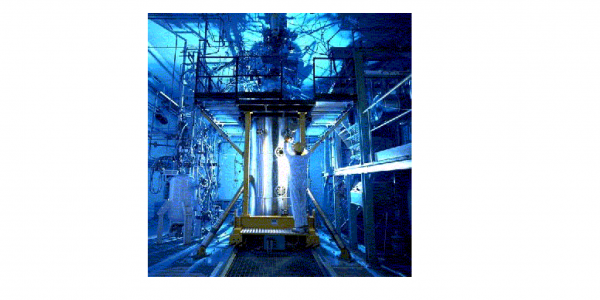
FARO (Furnace And Release Oven) experimental facility began the experiments of the LWR-MFCI phenomena in 1990 in collaboration with several reactor safety research organizations from European Union member countries and with the participation of the United States Nuclear Regulatory Commission.
The JRC-Ispra FARO plant was a large multipurpose test facility in which reactor severe accidents could be simulated by out-of-pile experiments. A quantity in the order of up to 200 kg of oxide fuel type melts (up to 3000 °C) could be produced in the FARO furnace, possibly mixed with metallic components, and delivered to a test section containing a water pool at an initial pressure up to 5.0 MPa. The reference scenario of the current test series is relevant to a postulated in-vessel core melt down accident when jets of molten corium penetrate into the lower plenum water pool, fragment and settle on the lower head.
Quenching: Investigation of basic phenomenologies relevant to the fragmentation and quenching of molten material into the water coolant at different initial pressure and water subcooling. 12 Tests have been performed: 5 at 50 bar initial pressure, 1 at 20 bar and 6 tests at pressure lower than 5 bar. In the last test an external trigger was applied to the molten mixture.
Objectives:
- investigation of basic phenomenologies relevant to the progression of severe accidents in water cooled reactors with particular emphasis on the interaction of molten fuel with coolant and/or structures under both in-vessel and ex-vessel postulated severe accident conditions.
- Provision of an Experimental Data Base for the Development and Improvement of Analytical Models and the Independent Assessment of Large System Codes used in LWR Safety Analysis.
Facility is dismanteled.
